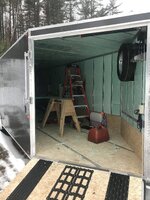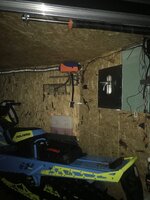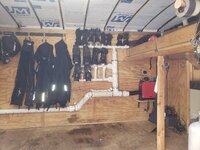Those are good things to keep in mind. ^ ^ ^
If set up properly these heaters burn VERY clean! There is a series of videos i posted (from some guy's youtube channel) earlier in this thread, that will answer most any question one might have about them. The combustion air exhausts to the outside. Inlet air to the combustion chamber can be drawn from the outside also, but in my case, i chose to vent the combustion exhaust out the side of the trailer, and draw inlet combustion air from inside the trailer as that pulls fresh air through a vent on the opposite side of the trailer. Heated air is not mixed with combustion exhaust air, it is circulated inside the "living space". NOW, having said this, there are those who DO NOT set these heaters up properly . . . restricted inlet air, restricted exhaust air, fuel pumps not positioned correctly . . . and many other things. Follow the recommendations on the videos, and you will have no issues.
As for the carbon monoxide levels in the exhaust, the test in the video below shows about 6-7 ppm. For comparison, the current Occupational Safety and Health Administration (OSHA) permissible exposure limit (PEL) for carbon monoxide is 50 parts per million (ppm) parts of air (55 milligrams per cubic meter (mg/m(3))) as an 8-hour time-weighted average (TWA) concentration
Check out the link to a video that talks about this. Starts at 7:19
If set up properly these heaters burn VERY clean! There is a series of videos i posted (from some guy's youtube channel) earlier in this thread, that will answer most any question one might have about them. The combustion air exhausts to the outside. Inlet air to the combustion chamber can be drawn from the outside also, but in my case, i chose to vent the combustion exhaust out the side of the trailer, and draw inlet combustion air from inside the trailer as that pulls fresh air through a vent on the opposite side of the trailer. Heated air is not mixed with combustion exhaust air, it is circulated inside the "living space". NOW, having said this, there are those who DO NOT set these heaters up properly . . . restricted inlet air, restricted exhaust air, fuel pumps not positioned correctly . . . and many other things. Follow the recommendations on the videos, and you will have no issues.
As for the carbon monoxide levels in the exhaust, the test in the video below shows about 6-7 ppm. For comparison, the current Occupational Safety and Health Administration (OSHA) permissible exposure limit (PEL) for carbon monoxide is 50 parts per million (ppm) parts of air (55 milligrams per cubic meter (mg/m(3))) as an 8-hour time-weighted average (TWA) concentration
Check out the link to a video that talks about this. Starts at 7:19










